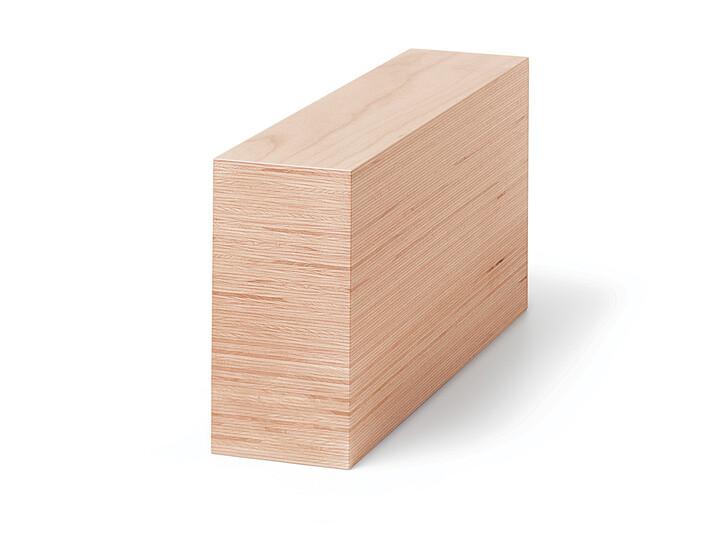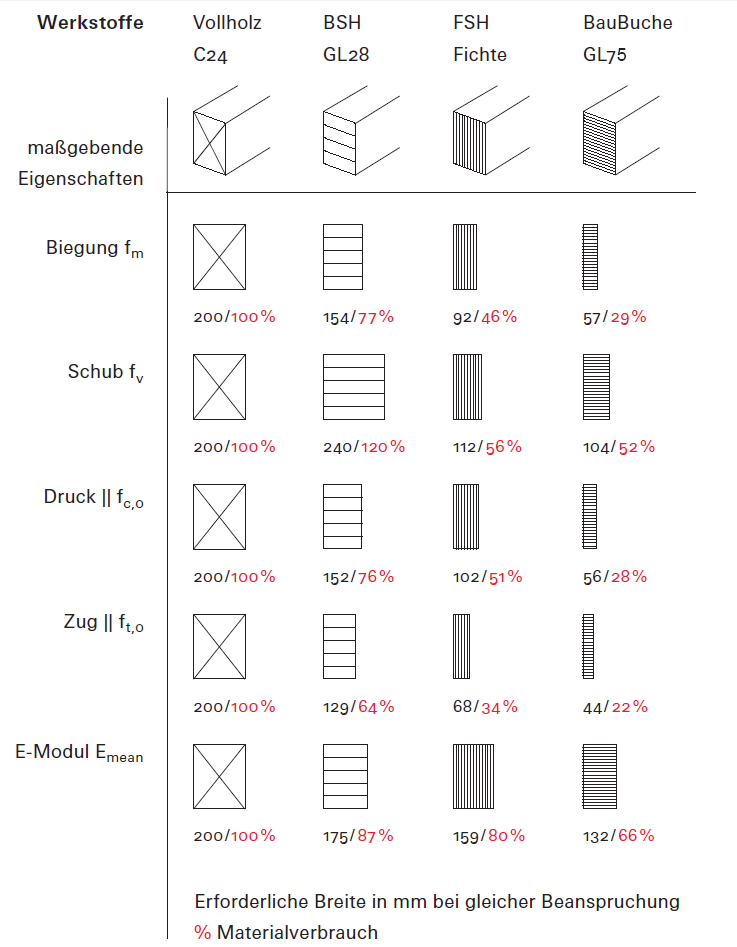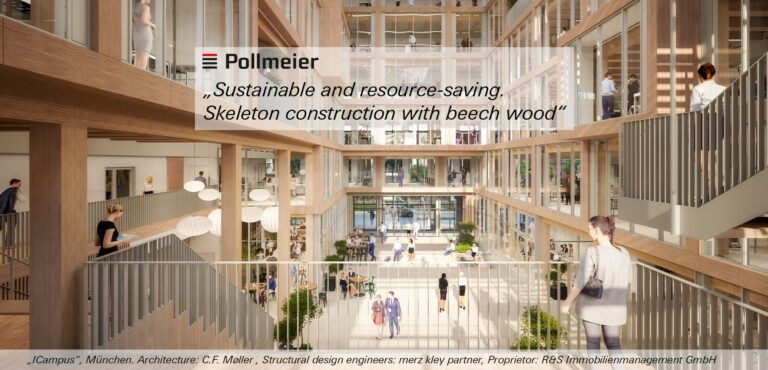Sign up for our BauBuche newsletters now.
This way you will regularly find out everything about our products, events and the timber industry.


BauBuche GL75 is made from parallel-laminated 40 mm BauBuche S veneer boards. Thanks to its exceptional strength and stiffness, BauBuche GL75 is the ideal material for slender and elegant constructions and wide spans combined with high loads.
BauBuche GL75 beams can also be installed so that its veneer layers are aligned vertically.
BauBuche beams are sanded at the factory and therefore ideal for exposed applications
The superior strength and stiffness of BauBuche allows smaller cross-sections, which in turn means major savings in material consumption. The dimensioning of a structure is determined by various properties, depending on the particular application. In the case of single-span beams, deformation (stiffness) is generally the key factor, whereas with continuous beams, it is bending strength or shear strength; and with columns and frameworks, it is compressive and tensile strength. The table opposite shows the amount of material saved by using GL28 glued laminated timber, spruce laminated veneer lumber and BauBuche GL75 respectively, in comparison with C24 solid wood (normal construction timber).
This is based on the following assumptions:

As part of the Engineering Timber Construction Days 2023, Dipl. Ing. Jan Hassan spoke about the use of BauBuche. Get to know BauBuche, a high-performance material made of beech wood with a compressive strength like concrete C50/60. With it, columns and beams of skeleton structures can be executed as slender as with reinforced concrete.
BauBuche GL75 is made from parallel-laminated 40 mm BauBuche S veneer boards. Thanks to its exceptional strength and stiffness, BauBuche GL75 is the ideal material for slender and elegant constructions and wide spans combined with high loads.
BauBuche GL75 beams can also be installed so that its veneer layers are aligned vertically.
BauBuche beams are sanded at the factory and therefore ideal for exposed applications.
The superior strength and stiffness of BauBuche allows smaller cross-sections, which in turn means major savings in material consumption. The dimensioning of a structure is determined by various properties, depending on the particular application. In the case of single-span beams, deformation (stiffness) is generally the key factor, whereas with continuous beams, it is bending strength or shear strength; and with columns and frameworks, it is compressive and tensile strength. The table opposite shows the amount of material saved by using GL28 glued laminated timber, spruce laminated veneer lumber and BauBuche GL75 respectively, in comparison with C24 solid wood (normal construction timber).
This is based on the following assumptions:

BauBuche GL75 is made from parallel-laminated 40 mm BauBuche S veneer boards. Thanks to its exceptional strength and stiffness, BauBuche GL75 is the ideal material for slender and elegant constructions and wide spans combined with high loads.
BauBuche GL75 beams can also be installed so that its veneer layers are aligned vertically.
BauBuche beams are sanded at the factory and therefore ideal for exposed applications
The superior strength and stiffness of BauBuche allows smaller cross-sections, which in turn means major savings in material consumption. The dimensioning of a structure is determined by various properties, depending on the particular application. In the case of single-span beams, deformation (stiffness) is generally the key factor, whereas with continuous beams, it is bending strength or shear strength; and with columns and frameworks, it is compressive and tensile strength. The table opposite shows the amount of material saved by using GL28 glued laminated timber, spruce laminated veneer lumber and BauBuche GL75 respectively, in comparison with C24 solid wood (normal construction timber).
This is based on the following assumptions:
Glulam made from beech laminated veneer lumber made from parallel veneers, glued with phenolic resin; surfaces and edges sanded (grade 80); edges bevelled, with visible splice joints; conforming to ETA-14/0354.
Thickness: mm
Width: mm
Length: mm
Camber: mm
Quantity: pcs
*Board BauBuche Q will not be available until the fourth quarter of 2023.
For a long time beechwood was neglected in forestry, and was mainly used as firewood. It was not until the mid-19th century that the beech tree was discovered as a source of timber, and afforestation began. Today it is the most common deciduous tree in Germany, accounting for around 15% of the entire tree population.
Do you have questions about timber construction or Pollmeier LVL?
Sign up for our BauBuche newsletters now.
This way you will regularly find out everything about our products, events and the timber industry.